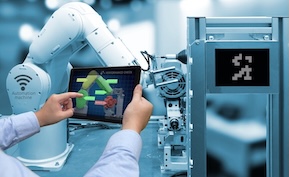Artificial Intelligence
Manufacturing
Generative Design SaaS for Manufacturers: How AI Is Helping Design Lighter, Stronger, Smarter Products

Product design in manufacturing has traditionally been constrained by human creativity, experience, and trial-and-error testing. Today, generative design SaaS platforms powered by AI are transforming how engineers and designers create products—enabling lighter, stronger, and more efficient designs faster than ever before.
What is Generative Design?
Generative design is an AI-driven process where designers input goals, constraints, and material properties, and the software generates multiple design alternatives. These alternatives are evaluated for performance, manufacturability, and cost, allowing teams to select the optimal design solution.
How SaaS Platforms Facilitate Generative Design
- Cloud-Based Computing: Run complex simulations and iterations in the cloud without requiring expensive local hardware.
- AI-Driven Optimization: Algorithms explore thousands of design permutations to identify high-performance solutions.
- Integration with CAD & PLM: Seamlessly export optimized designs into CAD software and product lifecycle management systems.
- Collaboration Tools: Teams can review, comment, and iterate designs in real-time across multiple locations.
Applications in Manufacturing
- Lightweight Structures: Optimize parts for weight reduction without compromising strength, critical in aerospace, automotive, and industrial machinery.
- Material Efficiency: Reduce material usage while maintaining performance, lowering costs and environmental impact.
- Custom Components: Generate designs tailored to specific requirements, including complex geometries that are difficult to achieve manually.
- Performance Simulation: Evaluate thermal, structural, and mechanical properties before physical prototyping.
Benefits for Manufacturers
- Accelerated Innovation: Explore a wider design space in less time compared to traditional methods.
- Cost Savings: Reduce material and prototyping costs by identifying optimal designs virtually.
- Improved Product Performance: Achieve stronger, lighter, and more efficient products.
- Collaboration and Flexibility: Enable distributed teams to contribute to design decisions in real time.
Challenges and Considerations
- Learning Curve: Engineers may need training to effectively use generative design tools.
- Integration with Manufacturing: Designs must be compatible with manufacturing methods such as CNC, additive manufacturing, or injection molding.
- Data Requirements: Accurate material properties, constraints, and goals are essential for generating meaningful designs.
- Cost vs. ROI: Evaluate subscription costs against potential time and material savings.
The Future of Generative Design in Manufacturing
Generative design SaaS platforms are revolutionizing product development by combining AI, cloud computing, and advanced simulation. Manufacturers that adopt these tools can innovate faster, reduce costs, and produce higher-performing products. As AI models improve and integrate more closely with manufacturing systems, generative design will become a standard practice in creating the next generation of efficient, sustainable, and high-performing products.






